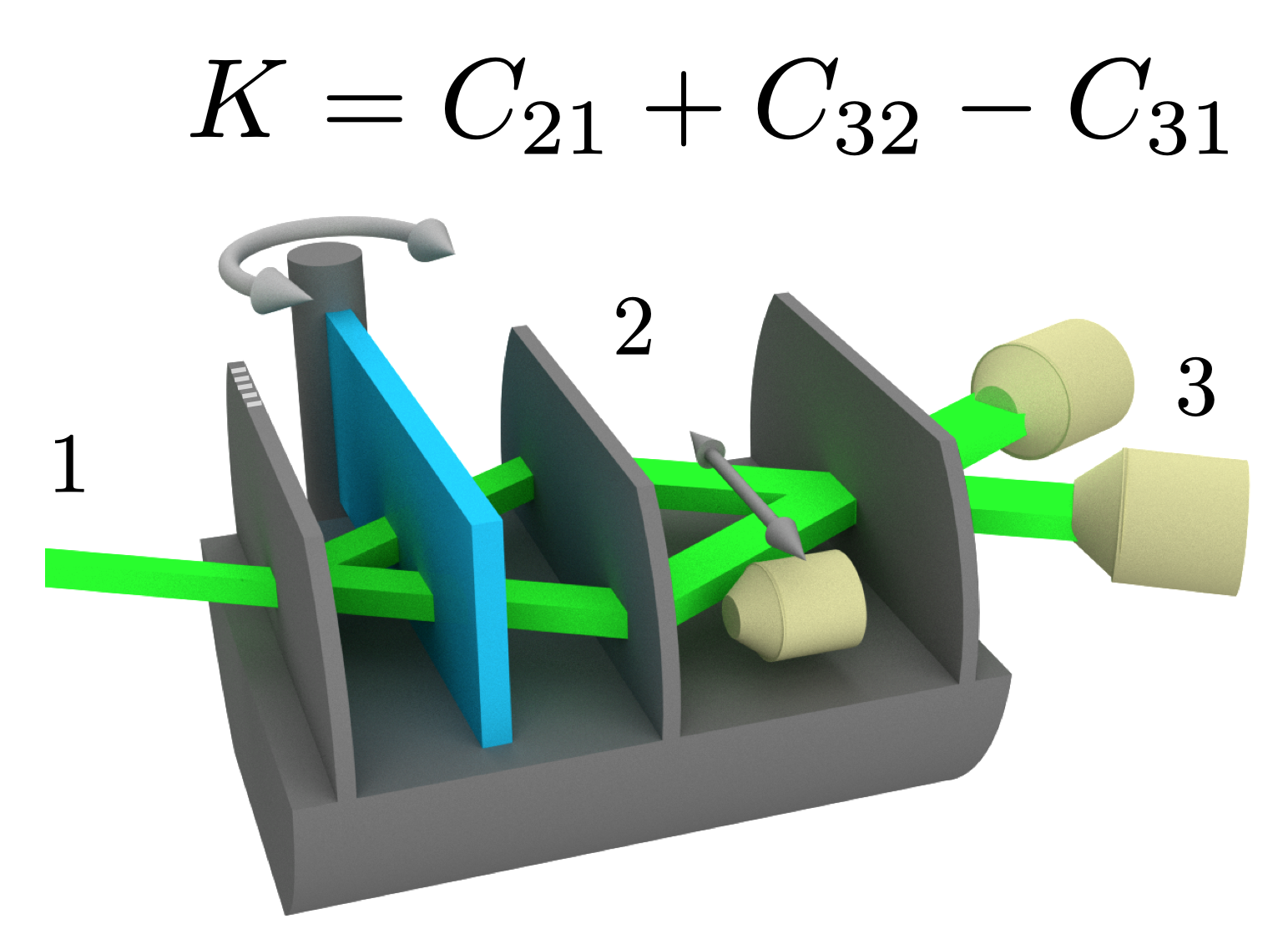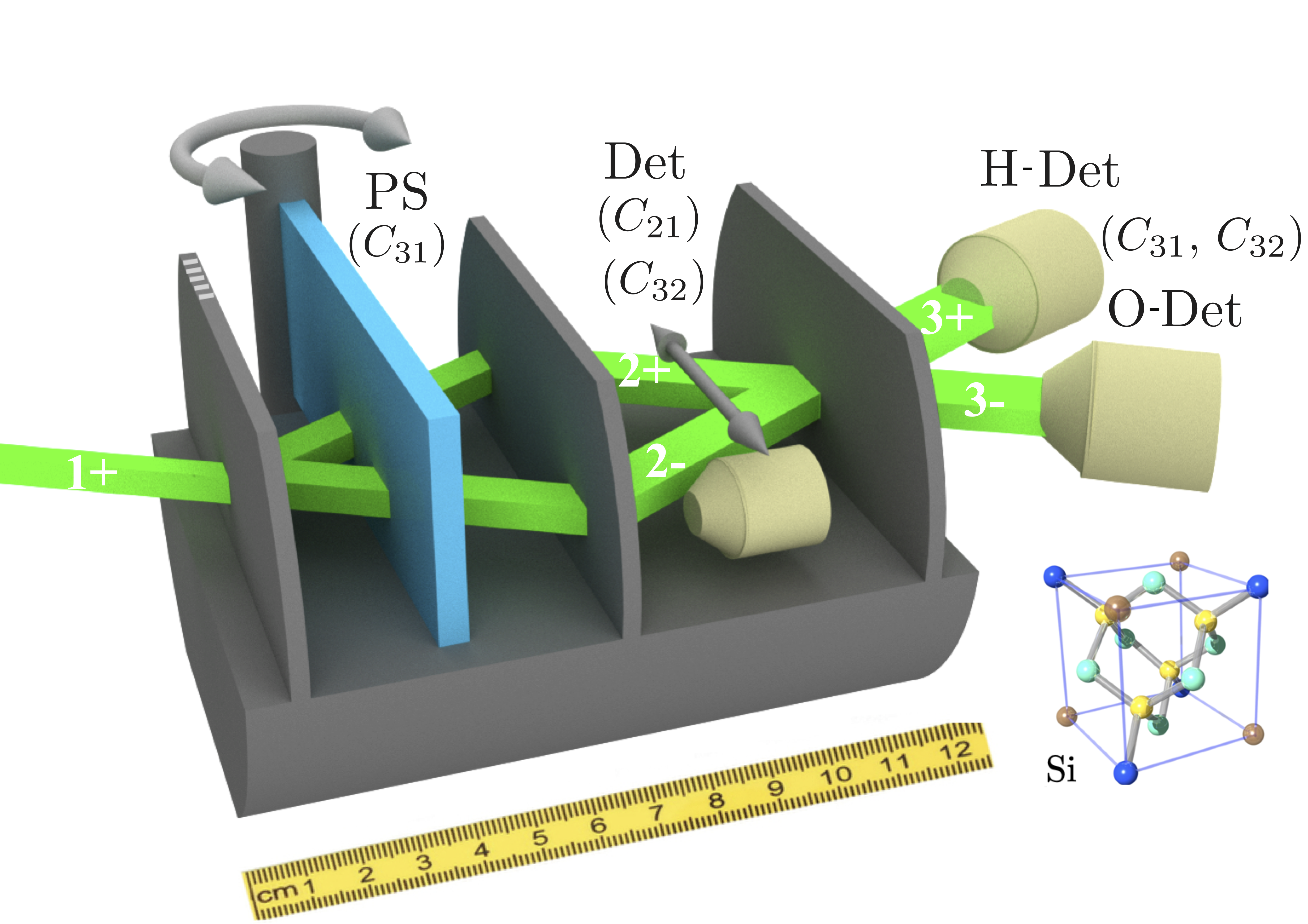
Violation of a Leggett–Garg inequality using ideal negative measurements in neutron interferometry
June 25, 2024 10:31 amIn our latest interferometric experiment 1 we answer the question whether measurable quantities of a quantum object have definite values prior to the actual measurement, which is a fundamental issue ever since quantum theory has been introduced. While the well-known Bell inequalities set bounds on correlations between composite or multiple spatially-separated systems Leggett-Garg inequalities (LGIs) study temporal correlations of a single system, which are derived under the assumption of so called macro-realism. There it is assumed, that any (macroscopic) object, which may occur in two (or more) macroscopically distinct states, is at any given time in a definite one of those states. The predictions of quantum mechanics stand in stark contradiction with these realistic theories, which manifest in violations of LGIs. Violation of LGIs occurs due to the coherent superposition of system states, which is essentially the most fundamental property of quantum mechanics, and can consequently be seen as a measure of quantumness itself (see here for details of the experiment and more results).
The criteria for quantifying the degree of macroscopicity of superposition states, which is a central argument in Leggett – Garg inequalities, have long been discussed in literature, resulting in a general agreement that the macroscopicity increases either with heavier masses or larger spatial separations of the super-position states. The macroscopic beam separation, accounting for the macroscopicity of superposition state, of several centimeters makes neutron interferometry therefore particularly suited to test Leggett – Garg inequalities.

We report on an experiment that demonstrates the violation of an LGI with neutrons, where the inequality yields a final measured value of the Leggett–Garg correlator K = 1.120 ± 0.026, obtained in a neutron interferometric experiment, is clearly above the limit K = 1 predicted by macro-realistic theories. This value is obtained by measuring the temporal correlations corresponding to three distinct regions of the interferometer, namely in front, inside, and behind the interferometer. The actual measurement of the qubit’s state (two-level system) probes the presence of the neutron in two particular regions of the interferometer, which is usually referred to as a “which-way” measurement. In order to not disturb the time evolution of the system, which is an essential feature for all LGIs, our measurement probes the absence rather than the presence of the neutron in the interferometer; this is called an ideal negative measurement. From the sum of these correlation measurements, we conclude that the obtained results cannot be explained within the framework of macrorealistic theories and are clearly in favour of the prediction of quantum mechanics.

1. E. Kreuzgruber, R. Wagner, N. Geerits, H. Lemmel, and S. Sponar,, Phys. Rev. Lett. 132, 260201 (2024). ↩